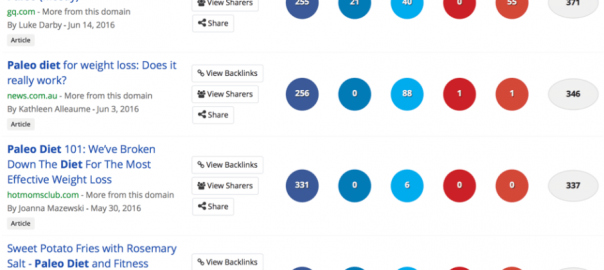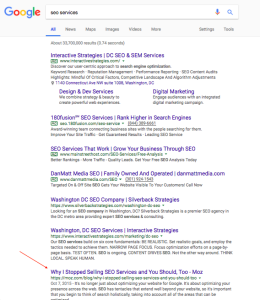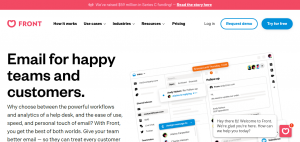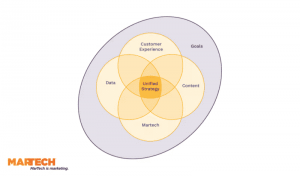There’s no doubt about it – creating an info-product is a huge task. In fact, for many people, the whole idea of creating something this sizable is completely overwhelming.
Which is why it’s important to split the process into stages, especially when it comes to gathering inspiration, researching, and organizing the content.
There are three main stages when it comes to collating and curating content for an info-product – regardless of whether you’ve got your heart set on an online course, an e-book, or anything in between.
1. Researching the content
This is the part where you’re putting the feelers out there. You’re seeing what similar stuff has already been promoted to the world, and you’re gathering bits and pieces that you can use as inspiration.
2. Organizing your research
Afterward, you need to organize what you’ve found. This is where you start breaking things down, laying out chapters or modules, and segmenting content into like-minded batches.
The research stage can get as messy as you like, but then you have to start honing things down if you want to create an info-product that’s well-structured and useful.
3. Creating the content
The last stage is actually creating the content, whether it’s videos for a course or the chapters of an e-book. The research and organization stages will influence this heavily, as it’s the moment that brings everything you’ve done so far together.
For the purpose of this piece, I’ll be talking more about the research and organization stages.
Once you have these nailed down and a hearty selection of content, ideas, and inspiration to draw from, the content creation part is actually pretty easy.
So let’s break this down even further.
Research Your Ideas
Step 1. Decide Who You Want to Target
Before you start Googling or even thinking about creating your info-product, you want to be crystal clear on who it is you’ll be targeting. Without an idea of this, your info-product is likely to be all over the place – the wider you throw your net, the harder it is to catch anything.
Once you’ve determined who it is you’ll be targeting with your info-product (really get into specific details like what makes them tick, what their major struggles are, and how their lives will be different with your info-product), it’s time to figure out what it is they need.
How do you do this? You go out and find them! There is no better way to know what your target audience wants than by finding out straight from the horse’s mouth.
• Find out where these people are hanging out
This will be different for every audience. For example, fashion lovers tend to hang out on Instagram, while gaming enthusiasts or vegetarians looking to start a paleo diet might have specific forums they regularly go to.

This screenshot shows the top results for the search term “fashion lover” on Instagram.
Stage one is finding out where your people hang out. The next step?
• Listen to their questions
You’d be amazed at the amount of people who think they know what their audience wants. But if you actually want to create a product that will resonate with them? You need to listen, listen, and listen some more.
Write down questions they’re asking in forums, consider what they’re sharing on social media, and explore the main conversation threads that are brought up.

A question asked on Quora (which I’ll talk about more below) that could trigger a whole host of ideas if you were creating an info-product centered around the Paleo diet.
• ASK them
So simple, but so overlooked.
You can always throw out a question on Facebook in a group dedicated to your target audience, or you can email a couple of people who you know would be a great fit for your product.

Roniece Wright asks her target audience what their frustrations are when it comes to their business in a Facebook group.
Simply ask them what they’re struggling with or what they need the most help with – this is the crux on which you’ll base your info-product.
Step 2. Find Inspiration
Once you’re armed with questions, problems, and struggles that your audience face, it’s time to start seeing what answers are already out there.
There are some great tools and techniques you can use to do this.
• BuzzSumo
BuzzSumo collects the most shared posts relating to the keyword you enter over a week, a month, and a year. You can see which articles are the most popular, and what in particular it is about your topic that they cover.

This search brings together the most shared articles about the Paleo diet in the last month.
• Quora
This question-and-answer site is ideal for discovering real questions from real people about your topic. There will often be well thought-out answers to follow, as well as links to relevant pieces you can explore.

If you’re a travel agency, you might consider including answers to these popular questions from Quora in your info-product.
• Facebook Groups
Facebook groups are so valuable for connecting with a large number of your target audience (there’s literally a group for everything).
Within these groups, people will be posting articles that have helped them, problems they face, and helpful advice that can inspire chapters and modules.
The visual platform of Pinterest makes it so easy (not to mention enjoyable!) searching for content that’s already been published about your info-product topic. The algorithm means the most popular articles are displayed first, so you can see which topics, titles, and information work best.
Step 3. Consider your knowledge and industry needs
The whole reason you’re creating your info-product is because you have a fountain of knowledge to share, right? It’s all well and good researching what other people are releasing on your topic, but it’s your own personal slant that will make your product stand out.
Think about how you can use your specific knowledge to offer a solution. Do you have a case study you can draw from?
Then it’s time to tighten things up by making sure you’ve covered every conceivable step. Pat Flynn shares a great way to do this. He searches for his topic on Amazon and then reads through the content pages of relevant books to see if he’s missed out on anything major.
You can also do this by checking out your competitor info-products. Not to copy (absolutely not!), but to see that you’ve covered everything and can offer more than they give.
Organize Your Ideas
Then it’s onto phase two of creating your info-product.
This is where you bring all the research together and start organizing it in a way that you can understand, and that starts to make sense as an info-product.
There are a number of tools you can use to do this.
• Google Docs
This is perfect for sharing ideas with team members and creating “live” folders for your research. You can create sub-folders where you can start drafting chapters, organizing relevant research for different sections, and editing feedback, ideas, and inspiration from your team.

Within this folder, I’ve gathered everything I need for a Webinar, including notes, graphics, and slideshow. I could share it with my colleague so we could both update it and work live from it.
• Evernote
Evernote works in a similar way to Google Docs, except you can add swipe files as you’re browsing the web. The great thing about Evernote is you can add all sorts of different media to your folders, including images, videos, text documents, and voice files, which makes it easy to compile everything in one place.

• Trello
Trello is a relatively new kid on the block. Unlike Evernote and Google Docs, it acts more like a scheduling tool, but you can still create different “segments” where you link to research, ideas, and inspiration. The layout is really user-friendly, with color-coded sections.

Once you’ve chosen a platform to work with (and I’d recommend choosing just one, otherwise you’ll end up with information all over the place), it’s time to start organizing it.
Step 1. Split content up into sections
Start by grouping together all likeminded content you’ve discovered. This can be a combination of things like audience questions from Facebook and articles, videos, and podcasts on your topic.
When you’ve grouped them together, you can start to get a feel for the topics that are most needed and that you have the most information for.
From there, you can loosely structure your info-product in different sections.
Step 2. Organize content within these sections
When you’ve got a structure for your info-product, you want to dig even deeper into your research and start structuring the different sections. Consider the information you already have and how it can be made into a sequence or a story that will take your audience from point A to point B.
You can also play around with screen shots, statistics, images, and other media you have to create a deeper experience for your audience.
By this point, you should have a pretty clear idea about the structure of your info-product, the different sections you’re going to focus on, and the information you’re going to cover in each section.
Now there’s only one thing left to do.
Create the content!
When you break down the research and organization stages into bite-sized chunks like this, it makes creating an info-product seem much more manageable.
Too many people focus on the end product before they’ve even considered who they want to reach and how they’re going to reach these people, which is why a lot of budding info-product makers fall flat at the first hurdle.
This distinct step-by-step method will help you create an info-product that’s not only well-structured and jam-packed full of juicy information, but that’s geared specifically towards your target audience.
Business & Finance Articles on Business 2 Community(40)









